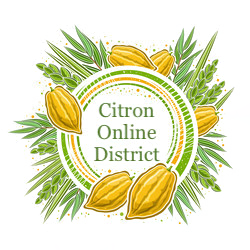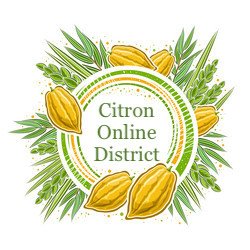Key Links:
Extemp Debate Quick Guide for Judges and Competitors (Google Doc)
For more guides and teaching resources please join National Speech & Debate Association
What is Extemp Debate?
Extemporaneous (Extemp) Debate is a way for students to show they can think critically with a very limited amount of preparation time. Students are given the topic one (1) hour prior to the tournament. The speeches are short so students need to know how to be concise in their arguments.
The topics are ripped from the headlines, so if they follow current events they should at least have some basis from which to start. This event focuses more on moral, ethical or logical issues. Evidence and sources although allowed and encouraged are not required, due to the short preparation time.
Extemp Debate Speech Times & Rules for Citron Online Weekday Tournament
Extemp debate is a one-on-one style debate.
Affirmative - Constructive - 2 minutes - Present your case
Negative-Affirmative Cross Examination - 1 minute - Negative questions the affirmative for clarification and dismantlement
Negative - Constructive - 2 minutes - Present your case / may offer rebuttal
Affirmative-Negative Cross Examination - 1 minute - Affirmative questions the negative for clarification and dismantlement
Time Out - 1 minute - Mandatory Time Out For Preparation
Affirmative Rebuttal - 2 minutes - Refute the opposition & reaffirm your case
Negative Rebuttal - 2 minutes - Refute the opposition & reaffirm your case
Time Out - 1 minute - Mandatory Time Out For Preparation
Affirmative Closing - 2 minutes - Justify how you have won the debate
Negative Closing - 2 minutes - Justify how you have won the debate
NOTE: Time outs are fixed in the round and may not be requested by the students.
Example Topics
Resolved: Kanye West ought to be removed from social media (i.e. Twitter, FB, Instagram, etc) for his anti-semitic comments.
Resolved: Those that attend college have a moral obligation to repay their loans in full.
Debating & Key Terms
Constructives: Normally these are pre-written speeches that are outlined with definitions, contentions, and sometimes will use a metaphor/example to simplify the choices presented.
Cross Examination (CX): CX is very traditional in that the debater asking the questions is in control of the examination period and the opposition cannot ask any questions outside of clarifying the examiners question. To put it bluntly if it is the Aff-Neg CX only the Aff should be asking questions and vice versa. It is not unusual for a debater to be satisfied with an answer and interrupt their opponent so they can move onto other material they would like to address. This is the most combative phase of any debate but there is an amount of mutual respect and sportsmanship expected. For many this is where speaker points are decided.
Rebuttals: The main objective of the rebuttals are to provide opposing evidence and refute the opposition. These speeches establish the clash for the round. No new contentions may be brought into the debate during rebuttals.
Closing: These speeches synthesize the debate down and should be able to show a clear decision to the judge for who has provided resolution to the clash in the round. No new contentions AND no new evidence may be brought during Closing.
Contentions: These are the complete packaged arguments that have a direct link to the resolution, addresses an issue, and provides a clear position to vote for or against. Contentions should be numbered for easy reference such as 1, 2, 3 etc. This allows both the judge and the opponent to flow the debate more easily. If an opponent did not address one of the numbered contentions the debater is encouraged to call this out to the judge during their rebuttals, this is known as “dropping an argument”.
Burdens: This is typically defined by the affirmative, but maybe challenged by the negative. Burdens set down the level of proof each side must achieve to win their case.
Impacts/Voter Issues: These are the reasons that a judge votes for a given team. In the rebuttal and closing teams will present what hypothetical worlds could exist if a judge were to vote AFF/NEG and this choice is how round winners are determined. For example, each side may present a different potential/hypothetical outcome of their side of the debate, thereby allowing the judge to evaluate the impact of the arguments.
Clash: Clash happens when there are two proposed positions that are in direct conflict with one another. The expectation is for there to be a clash of ideas otherwise there is no way to measure a debater’s capacity to resolve conflict through persuasion.
Customs
Paradigms: Some debaters may choose to ask a judge for their “paradigms”, which are the preferences of the judge of what they would like to see in the debate round. Some topics might lend themselves to some polarizing topics and while judges are asked to approach debates without bias this is an opportunity for a judge to be transparent if they don’t favor one type of argument. EX: 1) Some debaters will read their cases quickly to fit more content within their constructives if you cannot follow it you need to let debaters know before the round. 2) Some debaters and even the general public think of debate as two people yelling in a room or that condescension is a form of persuasion when really these are non-productive forms of conflict resolution; if you want to see sportsmanship like behavior you need to say it.
“Is everyone ready?”: Debaters should be asking if everyone is ready prior to beginning a speech or crossfire to keep everyone on the same page.
Time keeping: Judges and debaters are expected to keep and record their own time with a stopwatch. Judges should interrupt the debaters if they exceed the stated time limits by 5 or more seconds.
Tab/Judging Discretion/Disclosure of Decisions: Judges are expected to facilitate the timing for the debate round and to not interfere with the debate unless there are extraordinary circumstances. Judge evidence evaluation can be requested at the end of the round if a judge determines it as necessary to their decision (a qualitative glance at the authority, credentials, timeliness etc). Judge’s retain the right of decision discretion and can only be appealed to the tournament director/tab staff. That means that coaches and students are not allowed to challenge the decision of the judge, to the judge, they must go to tabroom staff or the tournament director. When in doubt, if you do not know then ask tab staff or the tournament director.

